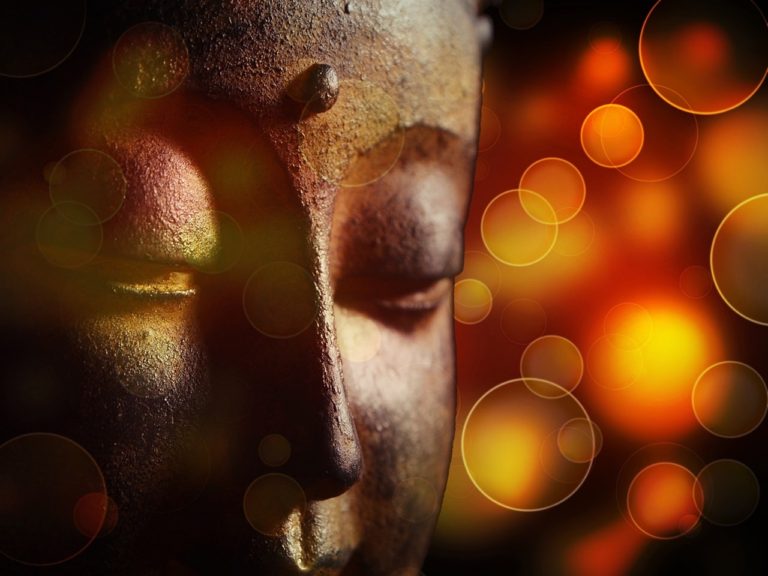The Ultimate Guide to Relaxing Meditation Music
Find inner peace and tranquility with the power of music.
In today’s fast-paced world, finding moments of calm and inner peace can seem like an elusive task. However, there’s a powerful tool that can effortlessly transport us to a state of serenity – relaxing meditation music.

With its enchanting melodies and harmonious compositions, this genre of music has the ability to soothe the mind and create a tranquil atmosphere that nurtures the spirit. Whether you’re a seasoned meditator or new to the practice, incorporating soothing tunes into your routine can greatly enhance your meditation experience. This ultimate guide will delve into the world of relaxing meditation music, exploring its various forms, benefits, and how to seamlessly integrate it into your daily life.
Understanding Relaxing Meditation Music.
What is Relaxing Meditation Music?
At its essence, relaxing meditation music is a genre carefully crafted to induce a sense of calm and relaxation. With slow tempos, gentle instrumentals, and harmonic compositions, this genre of music is designed to aid meditation practices, promote deep relaxation, and alleviate stress. The absence of lyrics allows the mind to focus solely on the soothing sounds, enabling a deeper connection with the present moment.

The Science Behind Its Calming Effects.
The impact of relaxing meditation music on the human brain has been the subject of scientific research. Studies have shown that listening to this genre of music triggers the release of neurotransmitters like serotonin and dopamine, inducing a state of relaxation and reducing anxiety. The music’s slow rhythm also synchronizes with brainwave patterns, guiding the mind into a meditative state and promoting a sense of inner stillness.
Types of Relaxing Meditation Music
Ambient Instrumental Music
Ambient instrumental music forms the foundation of relaxing meditation tunes. With a blend of soft pianos, gentle flutes, serene strings, and other melodic instruments, this genre creates an atmosphere of tranquility that fosters deep introspection and inner peace. The absence of vocals in ambient instrumental music ensures that the focus remains solely on the music itself, allowing the mind to journey into a state of serene bliss.

Nature Sounds and White Noise
Nature has a remarkable ability to calm the mind and soul, and integrating natural sounds into meditation music amplifies this effect. From the rhythmic crashing of ocean waves
to the gentle rustling of leaves in a forest, these sounds connect us with the serene essence of the outdoors. Additionally, white noise, such as soft rainfall or flowing streams, serves to mask distracting background noises, creating a peaceful environment conducive to meditation.

Binaural Beats and Brainwave Entrainment
Binaural beats are a fascinating aspect of relaxing meditation music. This phenomenon occurs when two slightly different frequencies are presented to each ear, creating a third “beat” that synchronizes brainwave patterns. As a result, the brain enters a meditative state characterized by heightened relaxation and heightened awareness. Additionally, brainwave entrainment techniques utilize rhythmic sound patterns to influence brainwave frequencies, further enhancing the meditative experience.

Traditional and Cultural Meditation Music
Throughout history, various cultures have harnessed the power of music for meditation and spiritual practices. From the soul-stirring Indian classical ragas to the enchanting sounds of Native American flute music, these traditional and cultural meditation music genres offer unique and immersive experiences of meditation, deeply rooted in cultural heritage.
Benefits of Relaxing Meditation Music
Stress Reduction and Relaxation
One of the most profound benefits of relaxing meditation music is its ability to reduce stress and promote relaxation. As the soothing melodies envelop the mind, the body’s stress response diminishes, giving way to a sense of calmness and well-being.

Improved Focus and Concentration
The serene ambiance of meditation music serves as an anchor for the mind, improving focus and concentration during meditation and daily activities alike. By creating a serene soundscape, the music helps quiet the mental chatter, allowing the practitioner to remain fully present in the moment.
Enhancing Mindfulness and Meditation Practice
Relaxing meditation music acts as a catalyst for mindfulness, providing a focal point for the mind to rest upon. By harmonizing with the music’s calming rhythms, practitioners can deepen their state of mindfulness, fostering a sense of inner awareness and peace.

Better Sleep and Insomnia Relief
The calming influence of meditation music extends beyond the realm of meditation itself. Listening to soothing melodies before bedtime can help relax the mind and body, leading to better sleep quality and relief from insomnia. The gentle sounds create a conducive environment for a restful night’s sleep.
How to Choose the Right Meditation Music
Matching Music with Meditation Goals
Before delving into the vast array of meditation music available, it’s essential to identify your meditation goals. Different types of music cater to various intentions, such as stress relief, improved focus, or spiritual connection. By aligning the music with your meditation objectives, you can enhance the effectiveness of your practice.

Considering Personal Preferences
As with any form of art, individual preferences play a significant role in the enjoyment of meditation music. Each person’s emotional response to certain sounds and melodies varies, making it essential to choose tunes that resonate deeply with your personal preferences.
Exploring Different Genres and Styles
The beauty of relaxing meditation music lies in its diversity. Within this genre, numerous sub-genres and styles exist, each offering a unique experience. To find the perfect musical companion for your meditation practice, explore different genres and styles, ranging from ambient and classical to world and electronic.

Incorporating Relaxing Meditation Music into Daily Life
Creating a Calming Meditation Space
Designate a quiet and comfortable space within your home specifically for meditation. Personalize it with elements that promote relaxation, such as scented candles, plush cushions, and nurturing plants. By dedicating this space to your practice, you create a sanctuary for tranquility and inner reflection.
Using Music for Mindful Breathing and Body Scan
During mindful breathing exercises and body scan meditations, the gentle tones of relaxing meditation music can serve as an anchor for the mind. By focusing on the music while engaging in deep breathing or scanning the body, practitioners can enhance their ability to stay present and cultivate a profound sense of relaxation. Be sure to pay particular attention to bells, chimes, and tones as a way back to focus.

Enhancing Mindful Exercise Sessions
Combine the power of music with the physical practice of tai chi, qigong, or yoga, for a harmonious and rejuvenating experience. Allow the music to guide the rhythm of your movements, syncing your breath with the melodies and immersing yourself in the transformative union of mind, body, and sound.
Popular Relaxing Meditation Music Artists and Albums
Renowned Meditation Music Composers
The world of relaxing meditation music is adorned with gifted composers who have dedicated their careers to creating transformative musical journeys. Musicians like Steven Halpern, renowned for his healing soundscapes, Deuter, the master of new age ambient music, and Snatam Kaur, celebrated for her ethereal mantra compositions, have profoundly impacted the meditation music landscape.
Top Albums and Tracks for Meditation
Numerous meditation music albums and tracks have garnered acclaim for their transformative effects. “Crystal Silence” by Peter Kater, an award-winning album known for its meditative piano melodies, “In the Light of Love” by Deva Premal, offering celestial mantra chants, and “Grace” by Jim Brickman, known for its uplifting and inspiring compositions, are just a few examples of transformative meditation music.
Conclusion
Embracing the tranquility of relaxing meditation music can lead to a profound transformation of the mind, body,
1. **Calming Melodies:** Choose music with soothing melodies and gentle rhythms. Opt for instruments like flutes, soft strings, or gentle piano notes that evoke a sense of tranquility.
2. **Steady Tempo:** Ensure the music maintains a consistent and slow tempo. A steady rhythm helps listeners synchronize their breathing and heart rate, promoting relaxation.
3. **Minimal Disruptions:** Avoid sudden changes that can break the listener’s focus. The music should flow seamlessly to create a seamless meditative experience.
4. **Natural Ambiance:** Integrate sounds from nature, like flowing water, rustling leaves, or distant waves. These sounds can enhance meditation by fostering a connection with the natural world.
5. **Extended Duration:** Select tracks that are longer in duration, preferably over 15 minutes. This prevents abrupt interruptions and allows listeners to deeply immerse themselves in their meditation practice.
Remember that the goal is to create an environment that fosters relaxation and mindfulness. Always test the music yourself to ensure it aligns with the intended meditative experience.







